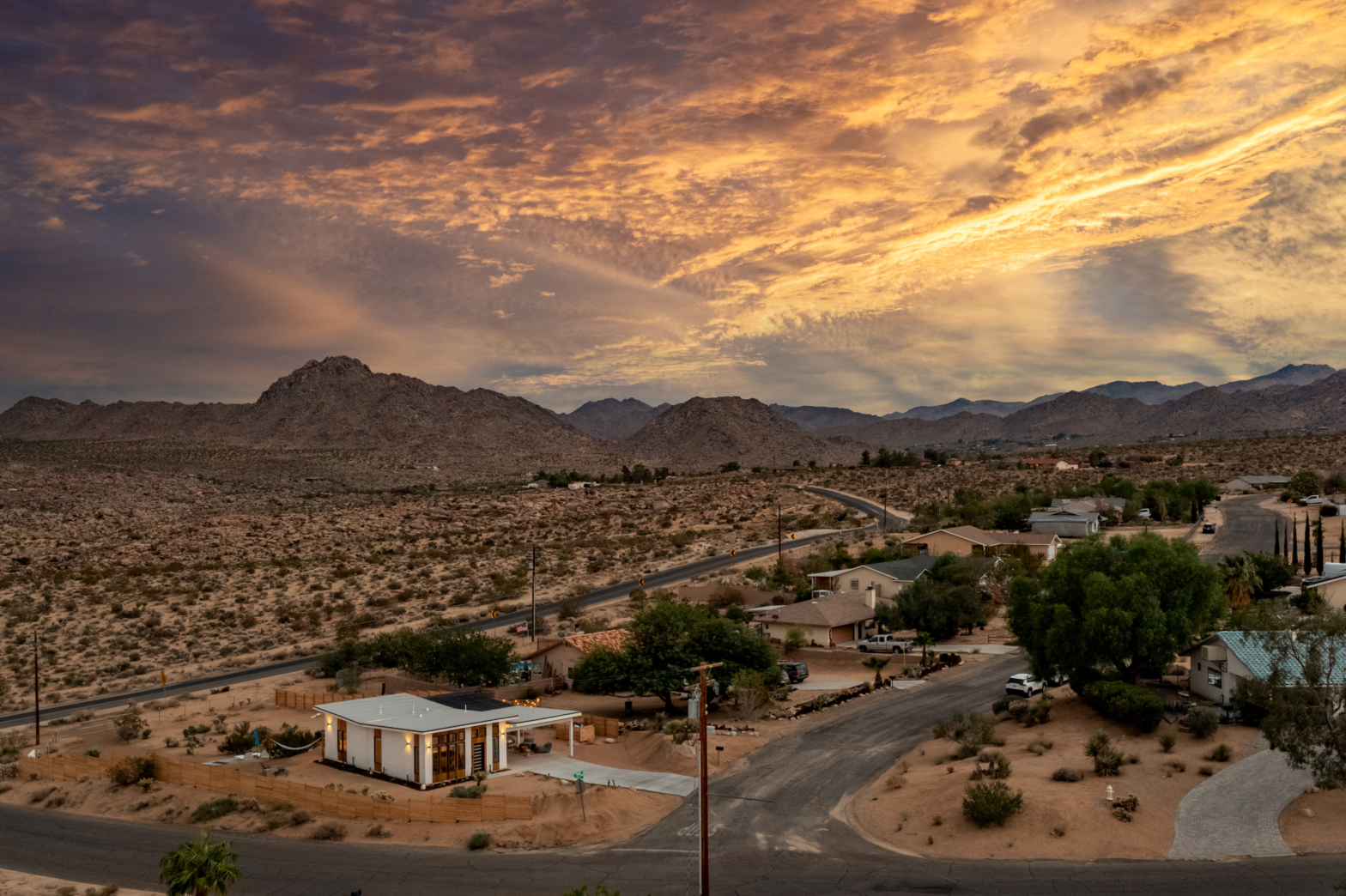Ever wondered what it’s like to step into a different world? Step into Joshua Tree! Where the desert beckons with its otherworldly landscape, twisted Joshua trees reach toward endless skies, and ancient rock formations create a natural playground unlike anywhere else on Earth.
This desert wonderland transforms dramatically with the seasons, offering visitors entirely different experiences depending on when they choose to explore its mystical terrain. Joshua Tree National Park and its surrounding communities present a unique destination that challenges conventional travel wisdom.
The best time to visit Joshua Tree is during spring (March-May) and fall (October-November) when temperatures are most favorable and skies are relatively clear. However, each season brings its own magic to this desert paradise, from spectacular wildflower blooms to unparalleled stargazing opportunities.
We’ll navigate you through Joshua Tree’s distinct seasonal personalities, monthly climate patterns, special events, and outdoor adventures, while helping you discover the perfect desert accommodation.
If you’re up for rock climbing, astronomical observations, or simply experiencing the profound silence of the desert, here’s your complete guide to choosing the best time to visit Joshua Tree and creating your best desert adventure yet.
About Joshua Tree, California
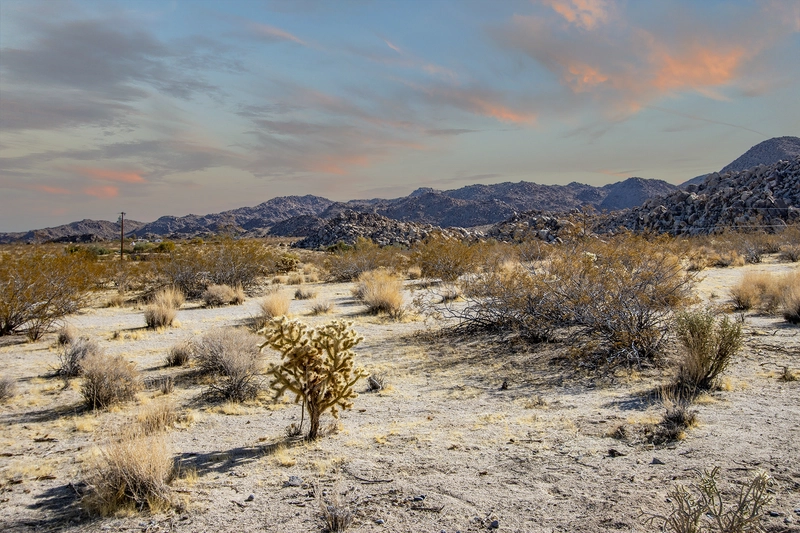
Joshua Tree National Park spans nearly 800,000 acres where two distinct desert ecosystems converge – the Mojave and Colorado deserts. This remarkable landscape features the park’s namesake Joshua trees, massive boulder formations perfect for rock climbing, and some of the darkest skies in Southern California, making it a premier destination for stargazing enthusiasts.
The park’s unique position creates a diverse ecosystem supporting everything from desert tortoises to bighorn sheep, while the surrounding communities of Joshua Tree, Twentynine Palms, and Yucca Valley offer artistic enclaves, historic venues, and authentic desert culture. The desert climate features sweltering summers and cold winters, with temperatures typically ranging from 35°F to 99°F throughout the year.
Joshua Tree Travel Seasons at a Glance
Understanding Joshua Tree’s seasonal rhythms will help you craft the perfect desert adventure. Here’s your essential seasonal overview.
High Seasons: March to May and October to November
These periods deliver ideal weather conditions with comfortable temperatures and clear skies, attracting the largest crowds and commanding premium accommodation rates. Spring brings potential wildflower displays, while fall offers perfect conditions for hiking and rock climbing with fewer temperature extremes.
Shoulder Seasons: December to February and September
Winter months provide cooler temperatures ideal for daytime exploration and exceptional stargazing opportunities, while early fall still carries summer heat. These seasons offer moderate crowds and reasonable pricing with distinct advantages for specific activities.
Low Season: June to August
Summer’s extreme heat creates the most challenging conditions but also the lowest prices and smallest crowds. Summer is arguably the worst time to visit due to potentially dangerous heat levels, though early morning and evening activities remain possible for heat-tolerant visitors.
Why Visit Joshua Tree?
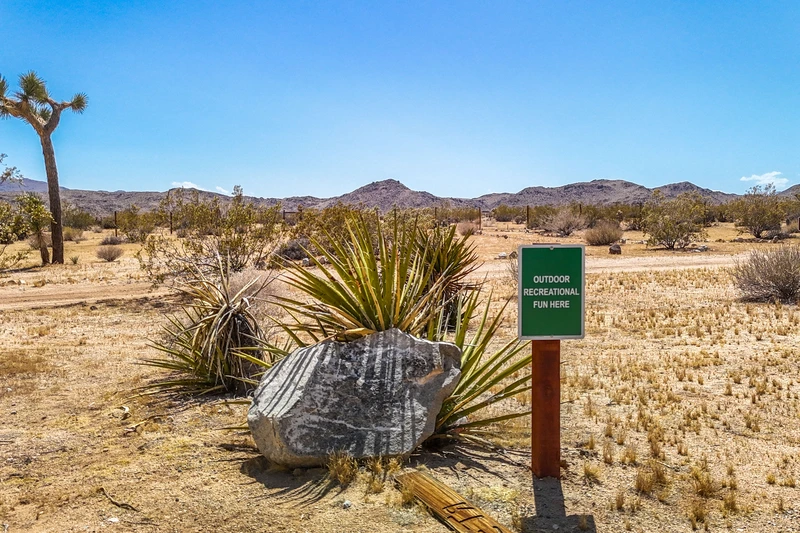
The allure of Joshua Tree extends far beyond its iconic twisted trees and massive rock formations. This desert sanctuary offers profound experiences that refresh the soul and challenge the body. Joshua Tree is one of only two International Dark Sky parks in California, providing some of the most spectacular stargazing opportunities on the continent.
The park presents world-class rock climbing on over 8,000 documented climbing routes, ranging from beginner-friendly bouldering to expert-level traditional climbs. Hiking trails wind through diverse desert landscapes, from hidden oases to panoramic vistas overlooking the Coachella Valley.
Joshua Tree’s artistic community has flourished since the 1940s, when musicians, painters, and writers discovered inspiration in the desert’s stark beauty. Today, visitors can explore galleries, attend concerts at legendary venues like Pappy & Harriet’s, and experience the creative energy that continues to draw artists from around the world.
The desert’s profound silence offers a rare opportunity to disconnect from modern life’s constant noise. Whether watching sunrise paint the rocks in golden light or experiencing the Milky Way’s full glory on a moonless night, Joshua Tree provides transformative experiences impossible in urban environments.
Your Month-by-Month Guide to Joshua Tree
- Joshua Tree in January: Cool days perfect for hiking, exceptional stargazing, lowest accommodation rates
- Joshua Tree in February: Pleasant temperatures return, wildflower season preparation, continued winter solitude
- Joshua Tree in March: Spring awakens, potential superbloom conditions, ideal weather begins
- Joshua Tree in April: Perfect hiking weather, peak wildflower season, comfortable camping temperatures
- Joshua Tree in May: Warm sunny days, last month of ideal conditions, spring’s final flourish
- Joshua Tree in June: Heat begins building, early summer challenge, fewer crowds
- Joshua Tree in July: Peak summer intensity, extreme daytime heat, desert survival conditions
- Joshua Tree in August: Hottest temperatures, monsoon potential, serious heat precautions required
- Joshua Tree in September: Heat persists but begins moderating, shoulder season transition
- Joshua Tree in October: Excellent weather returns, perfect climbing conditions, fall beauty emerges
- Joshua Tree in November: Comfortable days and cool nights, outstanding hiking weather, autumn tranquility
- Joshua Tree in December: Cool winter days, prime stargazing season, holiday desert peace
When Is the Best Time to Visit Joshua Tree?
The absolute best time to visit Joshua Tree is in the spring or late fall, specifically during March through May and October through November. These periods offer the optimal combination of comfortable daytime temperatures in the 70s to 80s, cool but not cold nights, minimal precipitation, and excellent conditions for all outdoor activities.
Spring brings the additional excitement of potential wildflower displays, which can transform the desert into a colorful carpet following sufficient winter rainfall. Fall provides consistently pleasant weather with crystal-clear skies perfect for stargazing and photography, while avoiding summer’s extreme heat and winter’s occasional cold snaps.
Visiting in Spring (March to May)
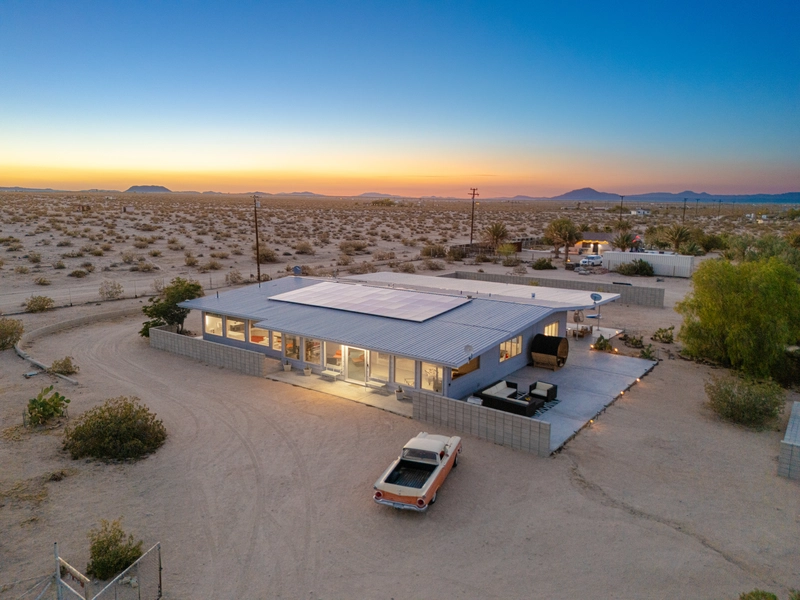
Spring represents Joshua Tree’s most dynamic season, when the desert awakens from winter dormancy with explosive displays of life and color. This period showcases the desert’s hidden beauty through blooming cacti, potential wildflower superblooms, and perfect weather for extensive outdoor exploration.
Spring offers weather perfection with clear skies, warm days averaging 70 to 85 degrees Fahrenheit, and pleasantly cool nights. The comfortable temperatures create ideal conditions for rock climbing, lengthy hikes, and camping under the stars without the extreme temperature swings of other seasons.
Spring’s magic lies in its unpredictability – some years bring spectacular wildflower displays that draw visitors from around the world, while others offer subtle desert beauty with perfect weather for outdoor adventures. This season combines the best of both worlds: comfortable conditions and the possibility of witnessing nature’s most dramatic desert spectacle.
Joshua Tree Weather in Spring
- March: 42°F (low) / 72°F (high) | Avg precip: 1.2 in
- April: 50°F (low) / 80°F (high) | Avg precip: 0.4 in
- May: 58°F (low) / 87°F (high) | Avg precip: 0.2 in
Things to Do in Joshua Tree During Spring
Spring weather makes every outdoor activity in Joshua Tree more enjoyable. Rock climbing conditions are perfect, with comfortable temperatures for both beginners learning basic techniques and experienced climbers tackling challenging routes. The extensive trail system becomes fully accessible, from easy nature walks like the Skull Rock Trail to strenuous hikes up Ryan Mountain.
Wildflower enthusiasts should explore areas like the Cholla Cactus Garden and Hidden Valley, where desert blooms create stunning photography opportunities. The cooler nighttime temperatures make camping particularly pleasant, while the clear skies provide excellent stargazing conditions for identifying constellations and planets.
Photography reaches its peak during spring, with perfect lighting conditions and potential colorful foregrounds from blooming desert plants. The comfortable temperatures also make it ideal for exploring the park’s cultural sites, including the Desert Institute and various ranger-led programs.
Joshua Tree Events in Spring
- Desert Institute Programs (March-May) – Educational workshops covering desert ecology, astronomy, and outdoor skills.
- Wildflower Festival (April) – Celebrating desert blooms with guided tours and educational presentations.
- Joshua Tree Music Festival (May) – Multi-day music and arts festival featuring diverse performers in a stunning desert setting.
- Spring Astronomy Programs (March-May) – Ranger-led stargazing events taking advantage of clear spring skies.
Local Eats in Joshua Tree During Spring
Spring brings outdoor dining opportunities to Joshua Tree’s restaurants, with perfect weather for enjoying meals on patios and terraces. Crossroads Cafe offers farm-to-table dining with seasonal ingredients, while Pappy & Harriet’s features BBQ and live music in their famous outdoor venue. Local farmers’ markets showcase spring produce and artisanal goods from desert communities.
The comfortable temperatures make it perfect for exploring Joshua Tree’s growing food scene, from casual cafes to upscale dining experiences that highlight Southwestern and Mexican influences with fresh, seasonal ingredients.
Joshua Tree Travel Tips During Spring
Spring attracts many visitors, particularly during wildflower years, so reserve accommodations and popular tours well in advance. Weather can vary significantly between warm afternoons and cool mornings, making layered clothing essential. Sunscreen and sun protection remain crucial despite comfortable temperatures.
Check wildflower reports before visiting, as peak bloom timing varies yearly based on winter rainfall patterns. Early morning and late afternoon provide the best lighting for photography and the most comfortable temperatures for strenuous activities.
Visiting in Summer (June to August)
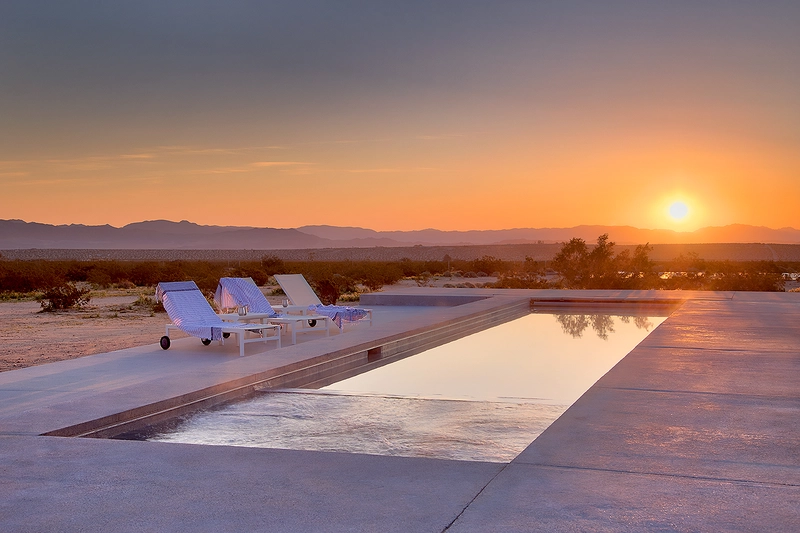
Summer in Joshua Tree presents the most challenging conditions but also unique opportunities for those prepared to handle desert extremes. Summer days are extremely hot and often windy, making this the park’s off-season. However, this season offers unparalleled solitude, dramatically lower prices, and the authentic experience of the desert’s raw power.
Summer temperatures can reach 99°F or higher, creating potentially dangerous conditions for unprepared visitors. Those who venture to Joshua Tree during summer must plan carefully, starting activities before dawn, seeking shade during midday hours, and ensuring adequate water supplies.
Despite the challenges, summer offers unique desert experiences impossible during other seasons. The extreme conditions create a profound appreciation for the desert’s harsh beauty, while the lack of crowds allows for intimate connections with this remarkable landscape.
Joshua Tree Weather in Summer
- June: 65°F (low) / 95°F (high) | Avg precip: 0.1 in
- July: 72°F (low) / 99°F (high) | Avg precip: 0.3 in
- August: 71°F (low) / 98°F (high) | Avg precip: 0.4 in
Things to Do in Joshua Tree During Summer
Summer activities in Joshua Tree require careful planning and early morning execution. Rock climbing becomes possible only during dawn hours, when temperatures remain manageable and rock surfaces haven’t absorbed the day’s heat. Hiking must begin before sunrise to avoid dangerous midday temperatures.
The Oasis of Mara provides a shaded respite during hot days, while visitor centers offer air-conditioned relief and educational programs. Photography opportunities abound during golden hour, when dramatic lighting contrasts with the stark landscape.
Swimming pools at accommodations become essential rather than luxurious during summer visits, providing necessary cooling and relaxation opportunities during the heat of the day.
Joshua Tree Events in Summer
- Early Morning Ranger Programs (June-August) – Special programs scheduled during cooler dawn hours
- Sunset Photography Workshops (June-August) – Taking advantage of summer’s dramatic evening light
- Desert Survival Programs (June-August) – Educational experiences about thriving in extreme conditions
- Astronomy Programs (June-August) – Excellent stargazing opportunities during clear summer nights
Local Eats in Joshua Tree During Summer
Summer dining in Joshua Tree centers around air-conditioned restaurants and early morning or late evening meals. Many establishments adjust their hours to accommodate the heat, opening earlier and closing during peak afternoon temperatures. Cold beverages, frozen treats, and light meals become priorities.
Local restaurants often feature summer-specific menus emphasizing cooling foods and drinks, while many visitors appreciate the convenience of grocery shopping and meal preparation in air-conditioned accommodations.
Joshua Tree Travel Tips During Summer
Summer requires serious preparation and respect for desert conditions. Carry more water than seems necessary, start all outdoor activities before dawn, and plan midday activities around air-conditioned spaces. Lightweight, light-colored, long-sleeved clothing provides better sun protection than shorts and tank tops.
Monitor weather forecasts for extreme heat warnings and flash flood potential during monsoon season. Book accommodations with reliable air conditioning and swimming pools, as these become essential rather than optional during summer visits.
Visiting in Fall (September to November)
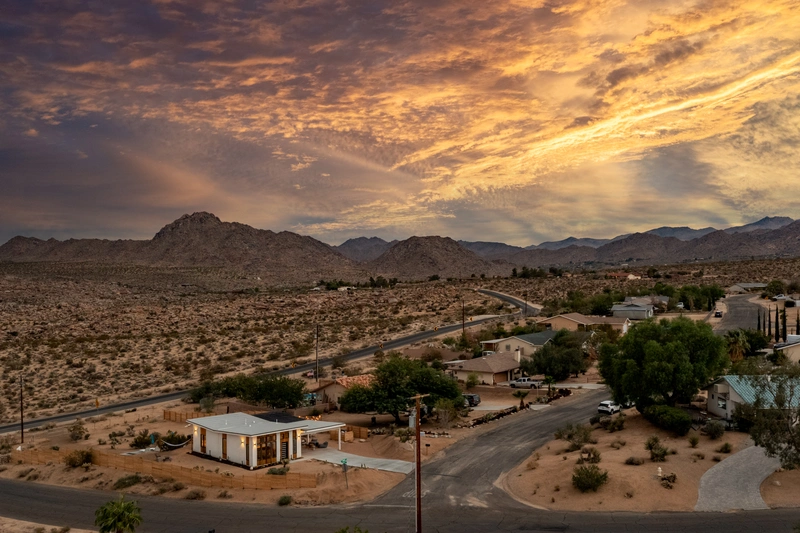
Fall is a divided season in Joshua Tree, with early fall still experiencing hot weather near 100 degrees, while October and November offer the best months with daytime temperatures in the 70s and 80s. This season provides some of Joshua Tree’s most perfect weather conditions, combining warm, comfortable days with cool, pleasant evenings.
Mid-October through December has very pleasant weather in Joshua Tree, with visitation starting to tick up but remaining less busy than the March/April high season. Fall offers excellent value with outstanding weather conditions and manageable crowds.
The season showcases Joshua Tree’s subtle beauty through changing light conditions and comfortable temperatures that make extended outdoor activities enjoyable. Fall’s clear, dry air creates exceptional visibility for both daytime landscape viewing and nighttime stargazing.
Joshua Tree Weather in Fall
- September: 63°F (low) / 90°F (high) | Avg precip: 0.3 in
- October: 52°F (low) / 80°F (high) | Avg precip: 0.3 in
- November: 42°F (low) / 70°F (high) | Avg precip: 0.4 in
Things to Do in Joshua Tree During Fall
Fall provides ideal conditions for every Joshua Tree activity. Rock climbing enjoys perfect temperatures and reliable weather, while hiking trails become accessible for longer, more challenging adventures. The comfortable conditions make it perfect for exploring remote areas of the park that might be uncomfortable during other seasons.
Photography benefits from fall’s exceptional air clarity and comfortable conditions that allow for extended shooting sessions during golden hour. The pleasant temperatures make camping particularly enjoyable, with warm days and cool but not cold nights.
Fall is also prime time for stargazing, with clear skies, comfortable temperatures, and excellent atmospheric conditions for astronomical observation and astrophotography.
Joshua Tree Events in Fall
- Night Sky Festival (October) – The park offers a Dark Sky festival in mid-October, celebrating Joshua Tree’s status as an International Dark Sky Park
- Autumn Astronomy Programs (September-November) – Regular stargazing events taking advantage of fall’s excellent conditions
- Photography Workshops (September-November) – Utilizing fall’s perfect lighting and comfortable temperatures
- Harvest Celebrations (October-November) – Local community events celebrating the season
Local Eats in Joshua Tree During Fall
Fall brings harvest-inspired menus to Joshua Tree’s restaurants, featuring seasonal ingredients and comfort foods. The perfect weather encourages outdoor dining, with many establishments offering expanded patio service and special fall menus. Local craft breweries and distilleries showcase seasonal offerings that pair perfectly with the comfortable evening temperatures.
The pleasant conditions make it ideal for exploring Joshua Tree’s diverse culinary scene, from food trucks to fine dining, without the extreme weather considerations of other seasons.
Joshua Tree Travel Tips During Fall
Fall offers some of the year’s best weather and value combinations. While October and November see increased visitation, crowds remain manageable compared to spring peak season. Book accommodations in advance for October, particularly during the Night Sky Festival.
Temperature variations between day and night require layered clothing, especially for camping and stargazing activities. This is an excellent time for first-time visitors to experience Joshua Tree’s full range of activities in comfortable conditions.
Visiting in Winter (December to February)
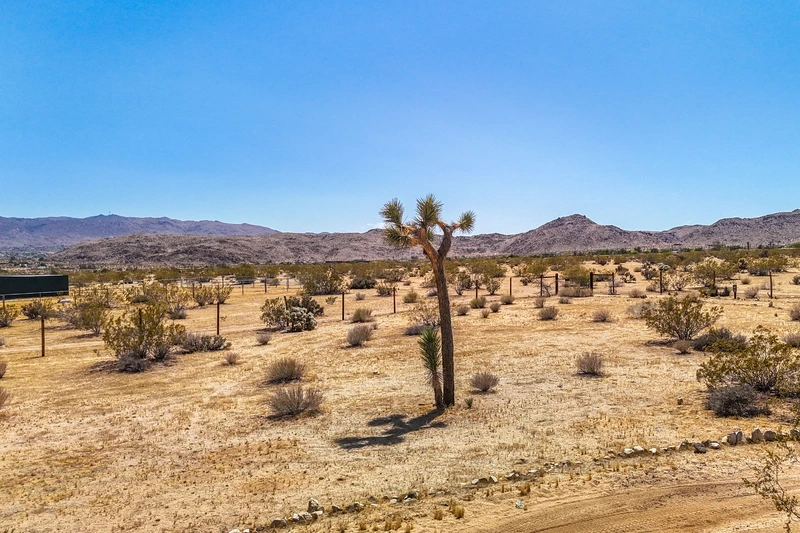
Winter provides cooler weather, sometimes snowy at higher elevations, and the thinnest crowds of the year. This season transforms Joshua Tree into a peaceful desert sanctuary, offering intimate experiences with minimal crowds and the year’s most affordable rates.
Winter temperatures are pleasant during the day, making outdoor activities comfortable while providing relief from the intense heat of other seasons. With longer nights, winter is the best time to go stargazing in this International Dark Sky Park.
Winter’s magic lies in its contrasts – sunny, comfortable days followed by clear, cold nights perfect for astronomical observation. The season offers unique perspectives on Joshua Tree’s landscape, occasionally dusted with snow that creates stunning photographic opportunities.
Joshua Tree Weather in Winter
- December: 35°F (low) / 62°F (high) | Avg precip: 0.8 in
- January: 35°F (low) / 60°F (high) | Avg precip: 0.9 in
- February: 38°F (low) / 64°F (high) | Avg precip: 1.0 in
Things to Do in Joshua Tree During Winter
Winter provides comfortable conditions for daytime hiking and rock climbing, though early mornings can be quite cold. The clear, dry air creates exceptional visibility for photography and sightseeing, while the comfortable midday temperatures make exploring the park’s attractions pleasant.
Winter nights offer unparalleled stargazing opportunities, with longer darkness periods and exceptional atmospheric clarity. The cold temperatures require warm clothing but reward visitors with spectacular views of the Milky Way and deep-sky objects.
Indoor attractions and visitor centers become more appealing during winter’s cooler periods, providing educational opportunities and shelter during cold mornings and evenings.
Joshua Tree Events in Winter
- Winter Solstice Celebrations (December) – Special astronomy programs marking the longest night
- Holiday Programs (December-January) – Family-friendly events and educational activities
- Photography Workshops (December-February) – Taking advantage of winter’s excellent lighting conditions
- Desert Ecology Programs (December-February) – Learning about desert adaptations during the quiet season
Local Eats in Joshua Tree During Winter
Winter menus feature hearty, warming dishes perfect for cool desert evenings. Many restaurants offer cozy indoor dining with fireplaces and warm ambiance. Local establishments often feature comfort foods and seasonal specialties that complement the cooler weather.
The fewer crowds make restaurant reservations easier to obtain, providing opportunities to experience Joshua Tree’s culinary scene without summer’s heat or spring’s busy periods.
Joshua Tree Travel Tips During Winter
Winter offers the best deals on accommodations and activities, making it ideal for budget-conscious travelers. Pack warm layers for early morning and evening activities, as temperatures can drop significantly. Plan indoor backup activities for occasional cold or windy days.
Take advantage of the excellent stargazing conditions by packing warm clothing and hot beverages for extended nighttime observations. Winter provides unique photographic opportunities with potential snow and exceptional atmospheric clarity.
Best Time of the Year to Visit Joshua Tree (By Interest)
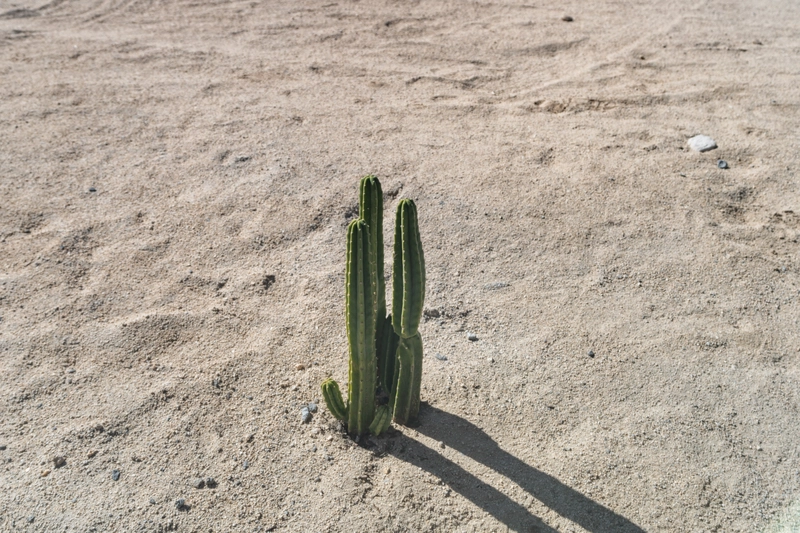
Joshua Tree’s diverse offerings and extreme seasonal variations make timing crucial for optimizing your desert experience. Although most agree that September through May are the ideal months for Joshua Tree weather, you can explore every month of the year with proper preparation.
Understanding your primary interests helps determine the perfect timing for your Joshua Tree adventure:
- For Smallest Crowds: January-February and weekdays year-round
- For Perfect Weather: March-May & October-November
- For Rock Climbing: March-May & September-November
- For Stargazing: October-February (longest nights and clearest skies)
- For Wildflowers: March-April (weather dependent)
- For Best Value: June-August & December-February
- For Photography: March-May & October-November
For Less Crowd: January to February and Weekdays Year-Round
Best Time to Visit Joshua Tree for Smallest Crowds
Winter months provide the most solitude, while visiting Monday through Thursday, any time of year, helps avoid weekend crowds at popular climbing areas and trails.
For Perfect Weather: March to May and October to November
Best Time to Visit Joshua Tree for Perfect Weather
These periods deliver ideal temperatures, minimal precipitation, and excellent conditions for all outdoor activities without extreme heat or cold.
For Rock Climbing: March to May and September to November
Best Time to Visit Joshua Tree for Rock Climbing
Comfortable temperatures and reliable weather make these seasons perfect for both beginner and advanced climbing, with rock surfaces at optimal temperatures.
For Stargazing: October to February
Best Time to Visit Joshua Tree for Stargazing
Longer nights, clearest skies, and comfortable evening temperatures create optimal conditions for astronomical observation in this International Dark Sky Park.
For Wildflowers: March to April
Best Time to Visit Joshua Tree for Wildflowers
Spring blooms depend on winter rainfall patterns, but when conditions align, the desert transforms into a spectacular wildflower display during these months.
For Best Value: June to August and December to February
Best Time to Visit Joshua Tree for Best Value
Off-peak seasons offer significant savings on accommodations, though summer requires serious heat preparation, while winter provides comfortable budget travel.
For Photography: March to May and October to November
Best Time to Visit Joshua Tree for Photography
Perfect lighting conditions, comfortable temperatures for extended shoots, and potential wildflower displays make these seasons ideal for capturing Joshua Tree’s beauty.
Where to Stay in Joshua Tree

Discover accommodations that blend seamlessly with the desert landscape while providing modern comfort and stunning views. Here are five exceptional Joshua Tree vacation homes available to rent with AvantStay, offering unique desert experiences:
- Chicory – Cozy 2-bedroom home that showcases desert light for a first-class ambiance.
- Chuckwalla – Contemporary desert escape designed for relaxation with earthy tones.
- Flora – Sophisticated desert oasis with a pool for the authentic Joshua Tree experience.
- Carmella – A minimalist property with stunning desert views and a stock-tank pool.
- Casa De Kota – Desert living style done right, that comes with all the things you need.
Create Your Joshua Tree Itinerary
Ready to plan your desert adventure? Let our experienced team handle every detail of your Joshua Tree experience! Our concierge service can arrange guided tours, stargazing experiences, and outdoor adventures.
Simply contact us or download the AvantStay App to book additional experiences, receive insider desert tips, and manage your entire stay through one convenient platform.
For more inspiration on desert activities, explore our comprehensive guide to the best things to do in Joshua Tree.
Ready to Plan Your Joshua Tree Adventure?
No matter when you choose to visit, Joshua Tree’s mystical landscape and profound desert beauty will create lasting memories. The park’s unique ecosystem and dramatic seasonal changes ensure that every visit offers new discoveries and transformative experiences.
We have the perfect desert sanctuary waiting for your arrival. Book with AvantStay today and discover how extraordinary desert vacations can be when you experience Joshua Tree’s timeless magic and endless starry nights.
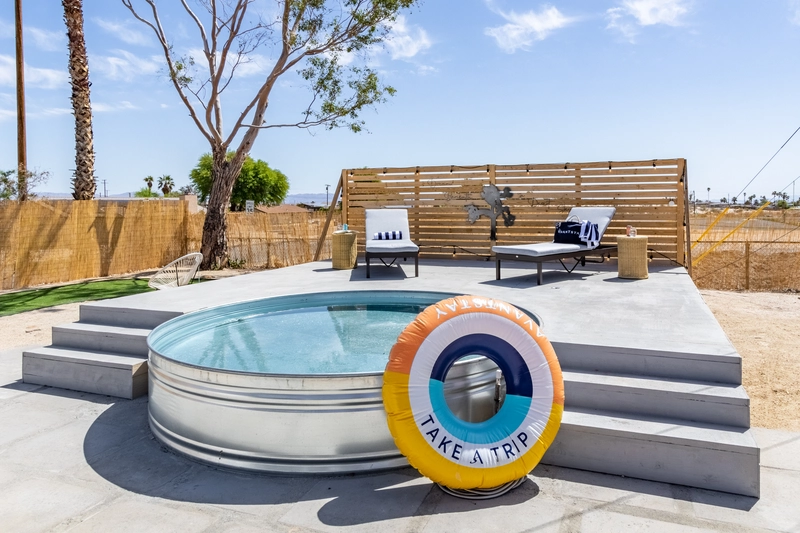
FAQs
Is Joshua Tree expensive to visit?
Joshua Tree can be costly during peak seasons (spring and fall), when accommodations command premium prices due to perfect weather conditions. However, budget-friendly options exist. Travel during summer or winter for significant savings, book vacation rentals with kitchens to reduce dining costs, and enjoy the park’s hiking trails and stargazing opportunities for free.
How busy does Joshua Tree get?
Peak seasons (March-May and October-November) see the largest crowds, particularly during wildflower blooms. If you prefer solitude and peaceful desert experiences, consider visiting during winter months or weekdays throughout the year for the most tranquil conditions.
When to avoid Joshua Tree?
Summer months (June-August) present potentially dangerous heat conditions that can be life-threatening for unprepared visitors. If you’re not experienced with extreme desert heat, avoid summer unless you’re prepared for pre-dawn activities and midday shelter requirements. Otherwise, Joshua Tree’s mild climate makes it accessible year-round with proper preparation.
